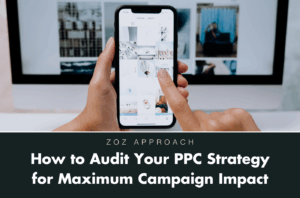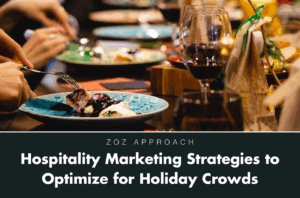Social media moves fast. What worked last year—or even last month—might now be doing more harm than good for your brand. As platforms evolve, so do user behaviors, algorithms, and best practices. Strategies that once drove engagement and growth may now stifle it. In this post, we’ll explore outdated social media tactics that are holding brands back and offer actionable, modern alternatives to help your social strategy thrive in today’s ever-changing digital landscape.
Staying ahead of these shifts is crucial. With social media being a key tool for brand visibility, engagement, and loyalty, those who fail to adapt risk falling behind competitors who are leveraging the latest trends. Let’s dive in to ensure your social media approach remains fresh, effective, and aligned with what your audience expects today.
Outdated Strategy #1: Posting Without a Plan
In the early days of social media, posting sporadically without a clear strategy was often enough to maintain an online presence. However, today’s social media landscape demands a much more calculated approach. Random or inconsistent posting leads to a scattered brand identity, leaving followers confused about who you are and what your brand represents. Worse yet, it dilutes engagement, as audiences are less likely to interact with brands that don’t offer regular, valuable content.
Why It’s Outdated:
Posting without a plan contributes to inconsistency. When you don’t have a schedule or content strategy in place, your messaging can become disjointed, and your brand’s voice may feel unclear. This lack of direction weakens brand identity, leads to missed opportunities for engagement, and makes it difficult to measure the success of your efforts. Additionally, without structured posting, brands fail to take advantage of peak engagement times, further limiting reach.
What To Do Instead:
It’s time to ditch random posts in favor of a data-driven content strategy. Start by creating a content calendar that aligns your posts with both your business goals and audience preferences. Using tools like Sprout Social or Buffer can help you organize, schedule, and automate posts, ensuring consistency across all platforms.
Be intentional about every post—each one should serve a purpose, whether it’s building brand awareness, engaging with your audience, or driving traffic. Analyze performance data regularly to optimize your strategy, adjusting your schedule and content based on what resonates most with your audience. By posting with a plan, you’ll build a stronger, more consistent presence that connects with your audience and drives meaningful results.
Outdated Strategy #2: Ignoring Video Content
For years, text and static images dominated social media. But with the meteoric rise of platforms like TikTok, Instagram Reels, and YouTube Shorts, the focus has shifted firmly to video. Brands that continue to rely solely on traditional content formats are missing out on the massive engagement potential that video offers. In today’s social media ecosystem, video isn’t just an option—it’s a necessity.
Why It’s Outdated:
Ignoring video content puts your brand at a disadvantage. Social media algorithms now favor video content, meaning your posts will have reduced reach if they aren’t utilizing this format. Users expect dynamic, visual storytelling, and platforms reward brands that meet this expectation with higher visibility and engagement. Sticking to static posts while neglecting video can cause your brand to appear outdated and out of touch with current trends, especially when short-form video is one of the most consumed types of content online.
What To Do Instead:
It’s time to embrace video as a core part of your social strategy. Start small with short-form videos, which are easier to produce and often more effective at capturing attention. Focus on creating authentic, engaging videos that resonate with your audience. You don’t need high-end production—raw, behind-the-scenes, or user-generated content can be equally, if not more, effective in driving engagement.
Repurpose content across multiple platforms to maximize your reach. For example, a video posted on TikTok can be tweaked for Instagram Reels or YouTube Shorts. Analyze how your video content performs on each platform and adapt based on the type of videos that receive the most engagement.
By incorporating video into your strategy, you’ll not only stay relevant but also tap into a powerful tool for storytelling, brand building, and audience connection.
Outdated Strategy #3: Posting Only Promotional Content
In the past, brands could get away with primarily posting promotional content—product launches, sales, and company updates filled their social feeds. However, audiences today crave more than just sales pitches. They want value, authenticity, and connection. Constantly promoting your brand without offering anything in return can turn followers off, resulting in decreased engagement and follower loss.
Why It’s Outdated:
Consumers have become increasingly savvy and selective about the content they engage with. A feed filled only with promotional posts feels impersonal and self-serving. People don’t want to be sold to all the time; they want content that entertains, educates, or inspires them. Brands that fail to deliver this kind of value are often ignored or, worse, unfollowed. This over-reliance on promotional content can alienate your audience, making it harder to build trust and long-term loyalty.
What To Do Instead:
To keep your audience engaged, adopt the 80/20 rule: 80% of your content should provide value—whether that’s through educational tips, entertaining stories, or behind-the-scenes looks—and only 20% should focus on promoting your products or services. By shifting the focus away from pure promotion, you create a more balanced, relationship-driven approach to social media.
Incorporate different types of content, such as user-generated content (UGC), where your audience shares their experiences with your brand, or behind-the-scenes footage that shows the human side of your company. Engaging storytelling also plays a key role here; share stories about your brand’s mission, your employees, or customer success stories that resonate emotionally with your audience.
By offering valuable, engaging content first and sprinkling in promotional posts strategically, you’ll cultivate a more loyal and connected audience who will be far more receptive when it’s time to promote.
Outdated Strategy #4: Overlooking Community Engagement
In the early days of social media, many brands treated their platforms like a one-way megaphone, simply broadcasting messages to their audience without expecting much in return. This approach is now outdated. Social media has evolved into a space for two-way conversations, where audiences expect brands to engage with them directly. Overlooking community engagement is not only a missed opportunity but can also harm your brand’s reputation in the long run.
Why It’s Outdated:
Treating social media as just another broadcast channel misses the point of what makes these platforms so powerful—interaction and community building. Brands that fail to engage with their audience risk coming across as unapproachable or uninterested in customer feedback. Social media users expect responses, whether it’s a simple acknowledgment of a comment, participation in trending conversations, or handling customer inquiries in real time. Without genuine engagement, your audience may feel ignored, leading to lower trust, reduced loyalty, and missed opportunities for relationship-building.
What To Do Instead:
Make community engagement a cornerstone of your social media strategy. This starts by actively responding to comments, messages, and mentions. Acknowledge feedback, answer questions, and show appreciation for your audience’s input. By doing so, you humanize your brand and foster stronger connections with your followers.
It’s also important to participate in conversations beyond your own content. Use social listening tools to track relevant topics and discussions happening in your industry or niche. Engaging in these conversations positions your brand as a thought leader and builds relationships with potential customers and influencers.
Additionally, consider creating interactive content that encourages dialogue, such as polls, Q&As, or live sessions. These formats not only invite engagement but also provide valuable insights into your audience’s preferences and needs. Authentic interactions with your community will create a loyal and active following that’s more likely to support your brand and spread the word.
By prioritizing community engagement, you’ll transform your social media presence into a thriving hub of conversation and connection, elevating your brand’s reputation and building lasting relationships.
Zozimus Social Media Solutions
Social media is a constantly evolving space, and staying stuck in outdated strategies can prevent your brand from reaching its full potential. From posting without a plan to ignoring community engagement, each of these outdated approaches can limit your brand’s growth and relevance in today’s digital landscape. By adopting modern alternatives—like creating data-driven content, embracing video, fostering authentic connections, and balancing promotional posts—you can build a more dynamic, engaging, and successful social media presence.
If you’re feeling overwhelmed by the pace of social media changes or unsure how to implement these strategies effectively, Zozimus is here to help. As an award-winning social media agency, we specialize in crafting tailored, innovative social media strategies that drive results. Whether you’re a small business looking to increase engagement or a large brand aiming to stay ahead of the latest trends, Zozimus has the expertise and tools to elevate your social media game.
Contact us today to see how we can help your business grow through effective, up-to-date social media strategies.

David Wilson
EVP, Digital Marketing & Performance
David has more than 20 years working in digital marketing, covering in-house for a variety of companies, agencies and running his own digital marketing company. He has worked on Fortune 500 clients in the Pharmaceutical, CPG, Financial Services, and Healthcare verticals.
David brings a passion for proven results to the Zozimus digital marketing team. When asked what he likes about his job, David says that “every day his team has metrics that they are trying to hit for clients. At midnight the scoreboard gets set back to zero and we either hit our goals or we didn’t.”
BOSTON, MARS



